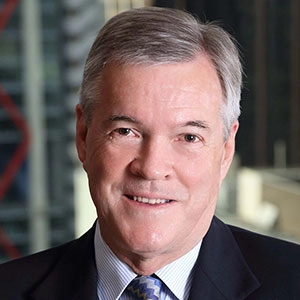Markets hope the Fed won't have to brake
When it comes to politicians tinkering with superannuation, 'meddle at your peril', Morningstar's Peter Warnes cautions.
Volatility has returned to U.S. equities markets. Previous complacency is now being jostled by increasing concerns over where new Federal Reserve chair Jerome Powell will take monetary policy and elevated political and geopolitical uncertainty.
Like it or not Powell and his Federal Open Market Committee (FOMC) have a challenge. The U.S. economy is back to normal after eight or so years, with GDP growth at last homing in on the long wished for 3% target after years of sluggish intermittent growth. But monetary policy languishes, with settings still nearer crisis levels despite six 25-point increases since tightening started in December 2015, including three in 2017.
As expected the FOMC raised the federal funds rate range 25 points to 1.50%-1.75% on 21 March. It projects an unchanged year-end target of 2.1% (2.00%-2.25% range) indicating two further increases in 2018. Targets for 2019 and 2020 were raised from 2.7% to 2.9% and from 3.1% to 3.4%, respectively. The March Dot Plot reveals more consensus than was evident in December, but only needs one vote to move consensus to three more hikes in 2018.
The FOMC seems to be saying "despite strengthening in the economy and labour market since January, we continue to adopt a cautious approach with further gradual adjustments in monetary policy, but down the road we'll raise rates if we need to". But, as we all know, the road is not always straight with adequate visibility and the members of the FOMC are not super-human seers. While there are warning signs, hairpins can surprise as evidenced with the January wages growth number. Headline and core inflation stubbornly remain below 2% on an annual basis. Markets hope the FOMC doesn't have to suddenly brake.
The immediate market reaction to the rate increase was positive, but on second thoughts turned negative with the three main indices finishing the day modestly in the red. The US$ was smacked, reflecting a dovish near-term Dot Plot tone and US$-priced commodities and gold surged. Bond yields fell at the short end of the curve but were unchanged at the long end. The spread between the 2 and 10-year treasuries has contracted from 74 points on 14 February to 58 points. This is not an encouraging sign for equities, although it may reflect subdued inflationary expectations rather than future economic growth.
The implications of corporate tax cuts and recent tariff increases are not fully reflected in the FOMC's forecasts as the potential for retaliation caused by the latter is unknown. Should the US$ remain under pressure, which is not my feeling, commodity prices are likely to continue to benefit. This will add to input prices and increase US import prices, potentially widening the trade deficit. The simmering Saudi/Iranian situation needs careful monitoring and is a positive for the oil price.
Higher interest rates will drive inflation
In this bizarre post-GFC world, where most traditional investment theories have been turned upside down, it seems central bankers everywhere are waiting for inflation to catch up before becoming more aggressive on tightening. Do they forget it is their monetary policy that has influenced inflationary trends over the past nine years? Negative real interest rates are the root of low inflation. To get inflation on the move, if that is what they collectively want, they need to increase the price of money, the price of access to money - credit.


